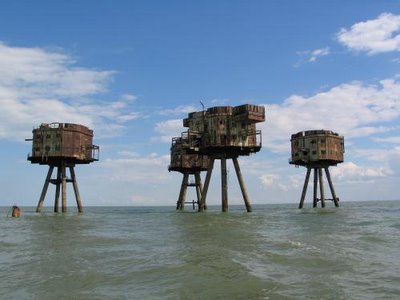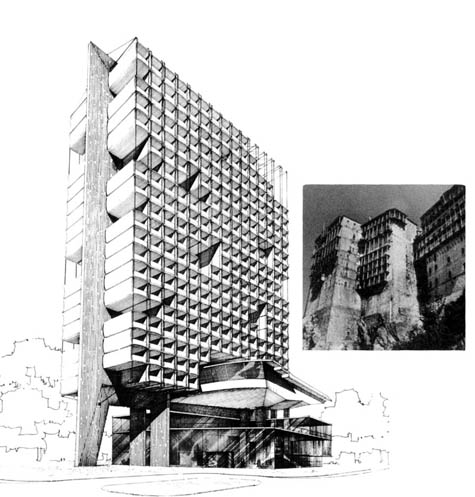 [Image: The Hanging Hotel by Takis Zenetos; think of it as the International Style meets the Potala Palace].
[Image: The Hanging Hotel by Takis Zenetos; think of it as the International Style meets the Potala Palace].
Nearly a year ago, a reader named Stavros Koulis tipped me off to the work of Takis Zenetos. Zenetos was a Greek architect whose work seems clearly to belong in a list of avant-garde mid-to-late 20th century architects like Yona Friedman, Constant, and even Archigram, but who seems otherwise to have been overlooked.
The above project – visible in the next image – is for a hanging hotel, a combination of Tibetan palace, Anasazi cliff dwelling, and artificial geological formation.
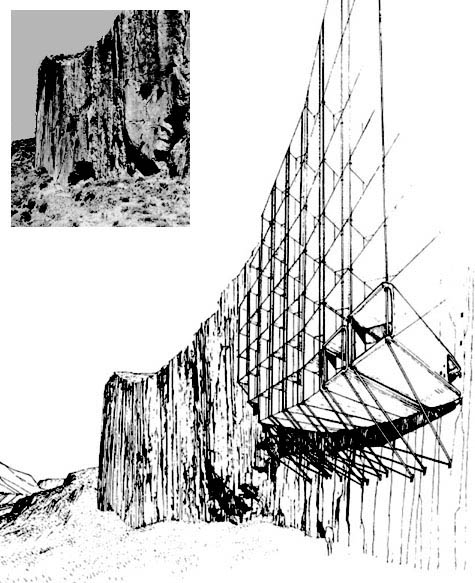 [Image: The Hanging Hotel, strung onto a cliffside like a musical instrument, by Takis Zenetos].
[Image: The Hanging Hotel, strung onto a cliffside like a musical instrument, by Takis Zenetos].
But his most exciting project, I’d suggest (based on very little information, to be frank), is Cable City, an incredible 1961 design for a suspended city – what Zenetos called une ville suspendue.
The entire metropolis would be hung from cables, a kind of tensional extension of the earth’s surface.
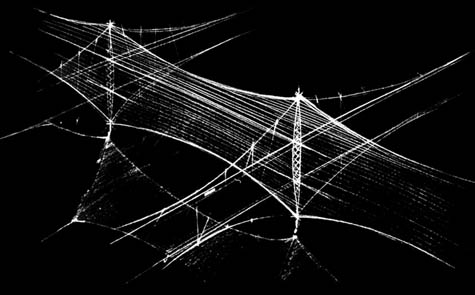 [Image: The Cable City of Takis Zenetos].
[Image: The Cable City of Takis Zenetos].
To be honest, I’ve never read a word about this thing in English, so who knows what I’m getting right here; but the overall impetus behind the project seems to be something like counter-terrestriality: a city that would not only span, but even temporarily replace, the earth’s surface, forming a cobweb of urban settlement. An extremely local architectural offworld made of capsules, wired Archigramian hammocks, and other high-tech micro-environments.
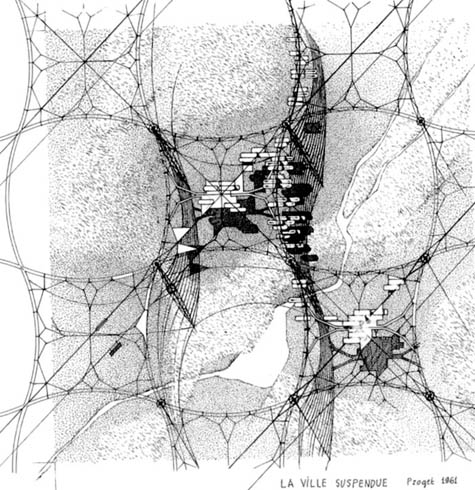 [Image: The Cable City of Takis Zenetos; the instant city as toupee].
[Image: The Cable City of Takis Zenetos; the instant city as toupee].
But my own descriptions shouldn’t get in the way of Zenetos’s images.


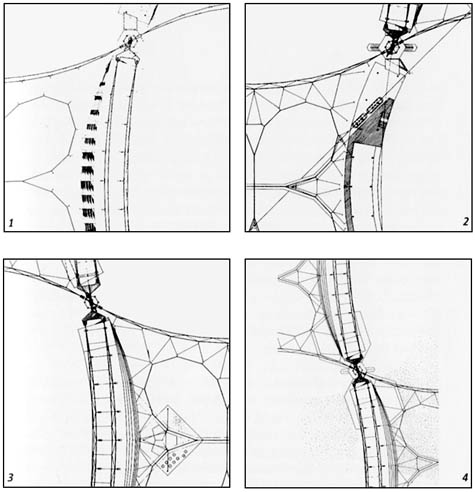
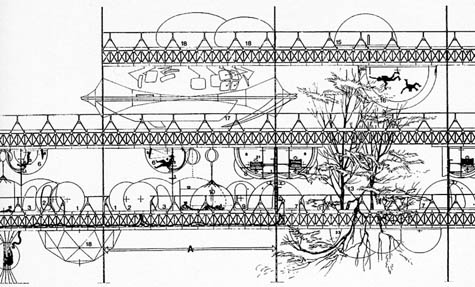 [Images: The Cable City of Takis Zenetos].
[Images: The Cable City of Takis Zenetos].
After all, he even drew gullies choked with wind turbines – sustainable, if bird-murdering, power stations – decades ahead of his time.
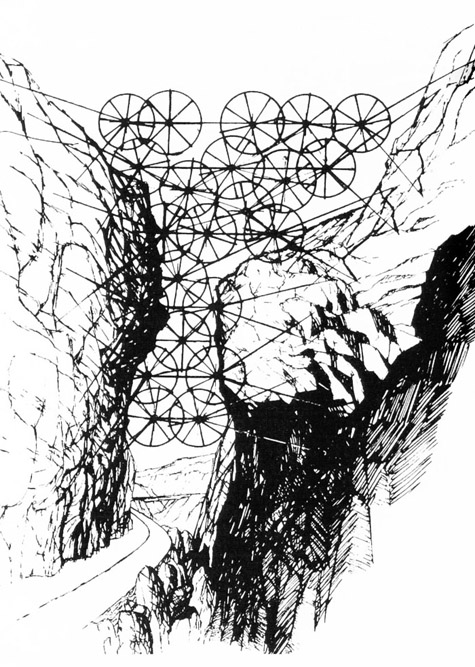 [Images: A turbined gorge by Takis Zenetos].
[Images: A turbined gorge by Takis Zenetos].
I’d love to know more about Zenetos, if anyone reading BLDGBLOG has more information. “Takis Zenetos (1926-1978),” we read, “is the pre-eminent architect of Greek modernism, with a varied oeuvre (industrial buildings, schools, residences, objects, urban planning studies), and he is best known for the FIX building on Syngrou Avenue and the Lycabettus theatre.
“What is not widely known is that Zenetos was a visionary of the future electronic city and the digital age.”
[Thanks to Stavros Koulis for sending me these scans].








